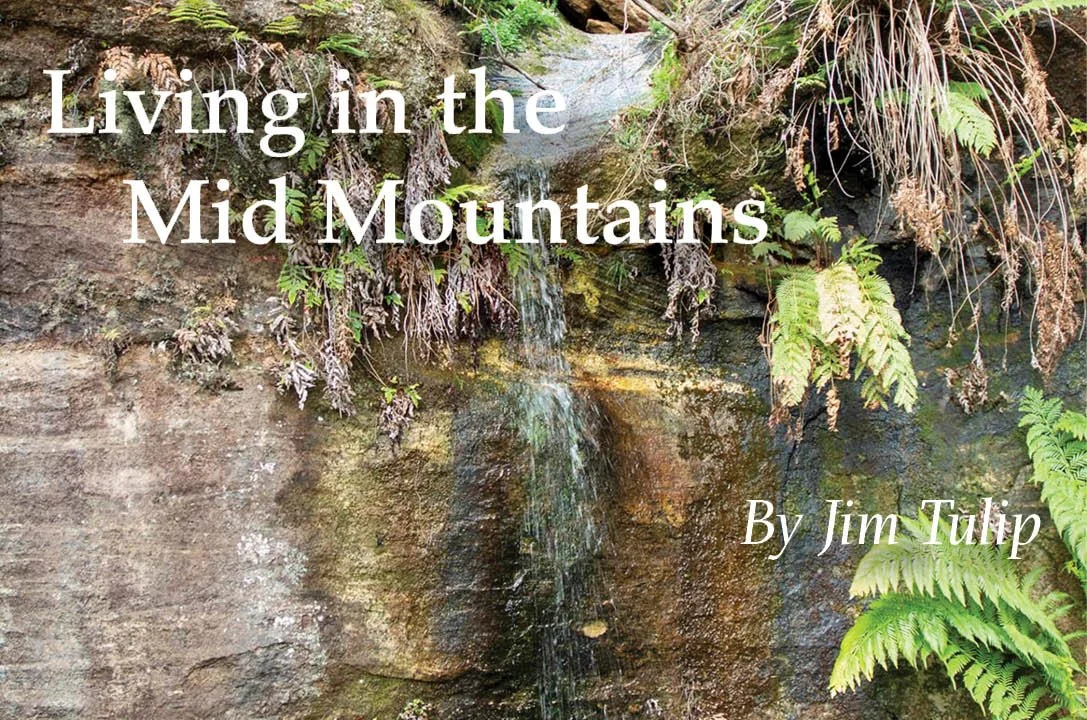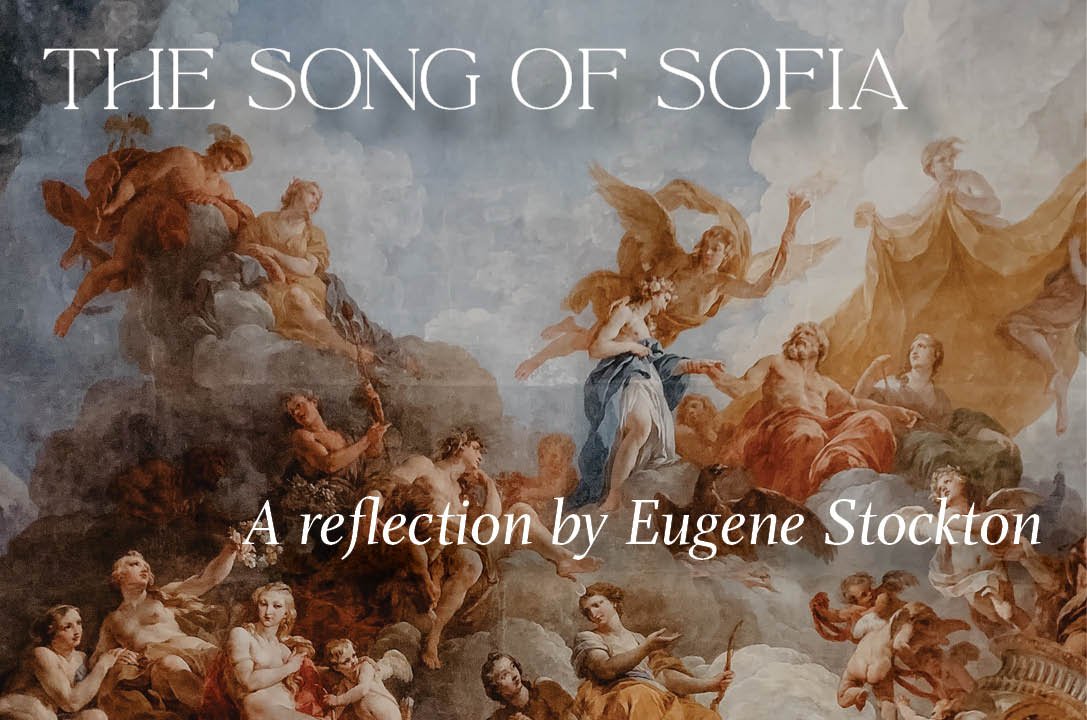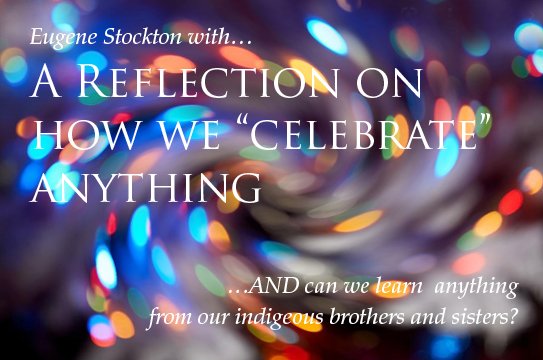
Index of Articles
-
![]()
Living in the Mid Mountains
by Jim Tulip
This story by Jim Tulip was published in the book, This Tortuous Ridge: Linden to Lawson, edited by Eugene Stockton in 2014. Most young Australian students in the 1950s, learned of the way the early settlers of Australia were prevented from crossing the Blue Mountains West of Sydney because of the ridges and cliffs. A way across the mountains was eventually found by the explorers Blaxland, Lawson and Wentworth after they had been shown the way by Aboriginal people.
-
![]()
What can we learn from the original custodians of our land?
This commentary is the text of an address priest-archaeologist, Fr Eugene Stockton gave recently to a new inter-religious theological forum in the Blue Mountains, The Blue Mountains Centre for Faith and Public Issues. This address by Dr Stockton at Leura Uniting Church was supported by Wayne Brennan and Chris Tobin. This talk draws on a number of studies and books undertaken over many decades in the Blue Mountains of New South Wales. Further information about these books is available in our shop HERE.
-
![]()
The Song of Sofia
Here is a timely, gentler reflection from Fr Eugene Stockton inviting us to contemplate the feminine side of the Divine, Lady Sophia, or Lady Wisdom. She is mentioned often in the books of the Old Testament. In this reflection, Fr Eugene gathers in one place the many ways in which the ancient writers described her presence in the story of our creation, and the story of our hopes and aspirations. These are words to sit with quietly and draw into your innermost spirit. ...Brian Coyne, Editor. Second Edition now available from Our Books For Sale collection.
-
![]()
Forest Dwellers
We recently drew your attention to a tribute published in the local secular news Forest Dwellers: An Alternative Life Style for the Blue Mountains Gazette, to the archaeologist and priest, Fr Eugene Stockton. The article mentioned that he now lives as a hermit. This drew quite a few queries from various people, some of them surprised that hermits even existed today. In response to this we are pleased to re-publish today a short essay Eugene wrote back in 2008, principally for his priestly confreres, explaining his choice and that it is a formal title available under Canon Law which he was granted by the local bishop. ...Brian Coyne, Editor
-
![]()
The Time Has Come
“The time has come for us priests to re-invent ourselves.” Today's short commentary by Fr Eugene Stockton was originally addressed to the priests of his own Deanery in the Parramatta Diocese. It logically flows on from a series of commentaries he wrote and which we published back in 2013 arguing for a continuing renewal of the priesthood. His stronger call in this commentary has been prompted by the recent revelations flowing from the Royal Commission in Australia and the recent revelations of a continuing exit from the pews. What he writes in this short commentary deserves wider circulation than to just priests in one Deanery of one Diocese. How many other priests across this nation might take up this call and help restore a bit of morale to the institution in this country? ...Brian Coyne, Editor.
-
![]()
Models of Pastoral Care
In this commentary Fr Eugene Stockton is effectively asking whether we need to go back to the raw canvas and re-think the basic parish structure upon which the entire Church has been built. It's not a completely blank canvas he suggests we go back to but to look at other models of pastoral care that have been used at various earlier points of history in the Church. He argues the present challenge the Church faces with the massive turning away from participation "is not a crisis for the Church. It is a crisis for a certain model of Church leadership and ministry.” ...Brian Coyne, Editor.
-
![]()
There is hope for a Tree
This commentary from Fr Eugene Stockton sits beautifully with the call made in the commentary yesterday by Fr Eric Hodgens for the Church to return to following the Way of Jesus. What Eugene writes is largely based on the writing of the British-American writer, Rosemary Haughton, who wrote a small book for the Catholic Commission for Justice and Peace in Sydney in 1980 titled “There is Hope for a Tree: A Study Paper on the Emerging Church”. If the Catholic Church is to reclaim a place of respect in the world, and in that now large congregation that has exited its own pews across the face of the educated world, there would seem to be some urgency in recovering the original vision of Jesus and his earliest followers. ...Brian Coyne, Editor
-
![]()
Young Aboriginal Woman
On Sunday I was privileged to be present, and to video, the launch of a book commissioned by Fr Eugene Stockton under the auspices of the Blue Mountain Education & Research Trust (BMERT). It is a hugely valuable piece of research that has been the personal endeavour of historian, Dr Jim Smith, over a period of decades. This is a piece of history of local interest to those of us who live in the Blue Mountains west of Sydney but will be of more important interest to indigenous people everywhere. The Burragorang Valley is situated on the Southern edge of the Blue Mountains and is the place where at least five different rivers meet.
-
![]()
A Reflection on how we “celebrate” anything
Over recent months I've been engaged in a lot of work with Fr Eugene Stockton preparing what I hope might be a major initiative for catholica in the coming year – encouraging a wider discussion on what religion and spirituality might look like in the future. Eugene started this with a proposal for a series of talks or papers under the broad title "Re-imaging the Parish". This shortish reflection today is one of a number Eugene has been sending through within that theme. In this reflection he suggests we can learn from our indigenous brothers and sisters in the ways they celebrate. He contrasts their ways of celebration to the very different ways we straight-laced non-indigenous peoples celebrate. Can we learn anything from what he writes in this reflection? ...Brian Coyne, Editor.
-
![]()
Eucharist
There's a good conversation been flowing on catholica for a long time now about the future for religion. The conversation is now diversely spread over many commentaries and posts so it is difficult to provide any three-sentence summary. From a completely different direction, Fr Eugene Stockton, has made a suggestion for our sponsoring some event, perhaps early next year, looking at ways in which parishes might be rejuvenated. He's offered a short reflection today that flows out of these two conversations on the meaning in the Eucharist — the central liturgical event in the life of a parish and the Church. I've also provided a lengthier but not too lengthy introduction to his reflection attempting to tie in what Eugene writes to these other valuable conversations that have been underway. ...Brian Coyne, Editor.
-
![]()
What Do We Mean
In recent days on the forum I've raised the question of what, precisely, do we mean when we talk about the mercy and compassion of God [SEE: "Is 'God' simply one BIG Myth or Metaphor?" LINK]. To what I wrote there I might have added the phrase "the Love of God". This reflection on what we mean by "the Love of God" arose out of a discussion Fr Eugene Stockton has been having in recent weeks with a mutual friend here in the Blue Mountains. When we speak of "the Love of God" what, precisely, do we mean; or is an expression like this incapable of being expressed too precisely? What are your thoughts and beliefs on this subject? Tell us what you believe and think, not what you think someone like Pope Francis or Fr Eugene might like to hear. How do you experience "the Love of God"? ...Brian Coyne, Editor.
-
![Feelings of Victimhood]()
Transforming Feelings of Victimhood into Victory
In a commentary in The Tablet back in July, Fr Daniel O'Leary wrote: "Recent research by Microsoft suggests that the average human attention span now stands at eight seconds. That is less, apparently, than that of a goldfish. This is astonishing. Can the quality and depth of our thinking have been so deeply affected by the incessant distractions of modern life? Our minds are precarious and vulnerable. Whenever we suffer pain, something in our consciousness is always quick to identify with that pain and we relay it over and over again, so that the stress we experience is magnified and intensified. The American Franciscan writer, Richard Rohr, believes that 'almost all humans have Obsessive Compulsive Disorder of the mind, which is why many people become fearful, suspicious, wrapped around their negative commentaries'.
-
![Stephen Hawking, Alone in the Universe, Observatory in Linden, Blue Mountains]()
What if we are alone
The small village of Linden in the Blue Mountains where we live and edit the BMERT website, does not have a shop, a church, or village hall. Its claims to fame in terms of infrastructure are a railway station, a fire station, and, of all things an Astronomical Observatory. In fact it was the second observatory established in Sydney. It's also famous because the gentleman who has been the heart and soul of this observatory in recent decades has also been a Uniting Church Minister, the Rev Bob Evans. He is renowned internationally as the astronomer most responsible for discovering by visual means more Supernova in the heavens than anybody else*. And he's done that as an amateur astronomer.
-
![]()
A Young Aboriginal Woman
The Aboriginal People of the Burragorang Valley was launched on Sunday, 20 November 2016, this book commissioned by Fr Eugene Stockton under the auspices of the Blue Mountain Education and Research Trust (BMERT). It is a hugely valuable piece of research that has been the personal endeavour of historian, Dr Jim Smith, over a period of decades. This is a piece of history of local interest to those of us who live in the Blue Mountains west of Sydney but will be of more important interest to indigenous people everywhere. The Burragorang Valley is situated on the Southern edge of the Blue Mountains and is the place where at least five different rivers meet. In the 1950s this valley was flooded to provide the main fresh water supply for Greater Sydney via what became Lake Burragorang and Warragamba Dam. The Aboriginal people who had lived in the valley, possibly for centuries, and later mainly poor Irish settlers, were forced out of the valley to make way for the flooding of the Valley.













